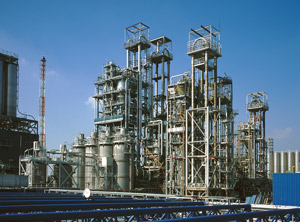 Managing Director of National Petrochemical Company (NPC) Marziyeh Shahdaei says Kurdistan Petrochemical Plant will become operational in the near future, adding the project will be beneficial to value chain completion in the petrochemical industry of the region.
Managing Director of National Petrochemical Company (NPC) Marziyeh Shahdaei says Kurdistan Petrochemical Plant will become operational in the near future, adding the project will be beneficial to value chain completion in the petrochemical industry of the region.
During a one-day visit to a number of petrochemical facilities in western Iran, Shahdaei said Kurdistan Petrochemical Plant will presently begin its feedstock intake from the West Ethylene Pipeline.
The plant is being developed for production of 300,000 tons of light density polyethylene per year.
Marziyeh Shahdaei, who is also deputy petroleum minister in petrochemical affairs, described the project as a major petrochemical project in western Iran that wields a major role in industrial development and job creation in the region.
Financed by €253m, the plant is one of the 12 petrochemical facilities that are to be fed by West Ethylene Pipeline in western Iran.
source: shana.ir
About Kurdistan
Iranian Kurdistan or Eastern Kurdistan (Kurdish: Rojhilatê Kurdistanê), is an unofficial name for the parts of northwestern Iran inhabited by Kurds which borders Iraq and Turkey. It includes Kurdistan Province, Kermanshah Province, Hamadan Province[1][2] most of Ilam Province, and some parts of West Azerbaijan and North Khorasan provinces.[3][4][5]
Kurds generally consider northwestern Iran (Eastern Kurdistan) to be one of the four parts of a Greater Kurdistan, which also includes parts of southeastern Turkey (Northern Kurdistan), northern Syria (Rojava or Western Kurdistan), and northern Iraq (Southern Kurdistan).[6]
According to the last census conducted in 2006, the four Kurdish-inhabited provinces in Iran, West Azerbaijan (2,873,459), Kermanshah Province (1,879,385), Kurdistan Province (1,440,156), and Ilam Province (545,787) have a total population of 6,738,787.[7] Pockets of Lurs inhabit the southern areas of Ilam Province.[8]
From the 4 to 5 million [9][10][11][12][13] Iranian Kurds, a majority are Sunni Muslims.[14] Sunni Muslim Kurds inhabit Kurdistan province and some parts of Kermanshah and West Azerbajani province. Shia Kurds inhabit Kermanshah Province, except for those parts where people are Jaff, and Ilam Province; as well as some parts of Kurdistan and Hamadan provinces. The Kurds of Khorasan Province in northeastern Iran are also adherents of Shia Islam. During the Islamic revolution in Iran the major Kurdish political parties were unsuccessful in absorbing Shia Kurds, who at that period had no interest in autonomy.
Read more on Kurdistan from Wikipedia












